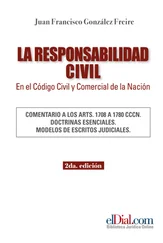Herbert White - A Civil Servant in Burma
Здесь есть возможность читать онлайн «Herbert White - A Civil Servant in Burma» — ознакомительный отрывок электронной книги совершенно бесплатно, а после прочтения отрывка купить полную версию. В некоторых случаях можно слушать аудио, скачать через торрент в формате fb2 и присутствует краткое содержание. Жанр: foreign_prose, История, foreign_edu, foreign_antique, на английском языке. Описание произведения, (предисловие) а так же отзывы посетителей доступны на портале библиотеки ЛибКат.
- Название:A Civil Servant in Burma
- Автор:
- Жанр:
- Год:неизвестен
- ISBN:нет данных
- Рейтинг книги:5 / 5. Голосов: 1
-
Избранное:Добавить в избранное
- Отзывы:
-
Ваша оценка:
- 100
- 1
- 2
- 3
- 4
- 5
A Civil Servant in Burma: краткое содержание, описание и аннотация
Предлагаем к чтению аннотацию, описание, краткое содержание или предисловие (зависит от того, что написал сам автор книги «A Civil Servant in Burma»). Если вы не нашли необходимую информацию о книге — напишите в комментариях, мы постараемся отыскать её.
A Civil Servant in Burma — читать онлайн ознакомительный отрывок
Ниже представлен текст книги, разбитый по страницам. Система сохранения места последней прочитанной страницы, позволяет с удобством читать онлайн бесплатно книгу «A Civil Servant in Burma», без необходимости каждый раз заново искать на чём Вы остановились. Поставьте закладку, и сможете в любой момент перейти на страницу, на которой закончили чтение.
Интервал:
Закладка:
Sir Herbert Thirkell White
A Civil Servant in Burma
TO
MY WIFE
WHO SHARED
MY LIFE IN BURMA
FOR MORE THAN THIRTY-TWO YEARS
PREFACE
This is not a guide-book, or a history, or a study of manners and customs. It is a plain story of official life for more than thirty years. It does not compete with any of the books already written about Burma, except, perhaps, the monumental work of General Fytche. While pursuing as a rule a track of chronological order, I have not hesitated to wander into by-paths of dissertation and description. I could not write without attempting to give fragmentary impressions of the people and their character. As far as possible I have limited my narrative to events within my own knowledge; my judgments are based on my own observation.
I have to express my acknowledgments to the friends who have given me photographs to illustrate the book. My special thanks are due to Mr. A. Leeds, I.C.S. (retired), for a large number of characteristic and charming pictures.
H. T. W.September, 1913.
NOTE
Burmese words are spelt according to the Government system of transliteration. Consonants have the same power as in English. Y after g combines to form a sound approximating to j : gyi = “jee”; after every other consonant it is short— my̆o . Yw is pronounced “yu.” Vowels and diphthongs have the sounds given below:
Every letter, except y after g , is sounded separately, including final vowels. Thus, lu-gale is pronounced “loo-ga-lay.” These instructions are crude and unscientific, and may excite the derision of purists. They will enable anyone to pronounce Burmese words with some approach to correctness. In the case of Shan names I have as a rule adopted the Burmese forms rather than the Shan forms in official use, which no one who does not know the language can pretend to pronounce properly.
CHAPTER I
INTRODUCTORY: A RETROSPECT AND SOME COMPARISONS
Burma is a Province of the Indian Empire. It is not, as some suppose, a Crown Colony administered directly under the Colonial Office. Nor is it, as others do vainly talk, a foreign State where Britain is represented by Consuls. It is the largest, yet the least populous, of Indian Provinces, more extensive even than undivided Bengal. The estimated area is over two hundred and thirty thousand square miles, larger than either France or Germany. According to the last census (1911), the population is about twelve millions. On the west, its seaboard washed by the Bay of Bengal, Burma marches with Bengal, Assam, and Manipur; on the east, with China, French Indo-China, and Siam. To the north, it stretches, through tracts unadministered and unexplored, to the confines of Tibet. The mass of the people are Burmans, a Mongol race akin to Chinese and Siamese. Other races in Burma are Talaings, scattered over the Irrawaddy Delta and the Tenasserim division; Shans, who occupy the great plateau on the east and are also found in the northern districts; Karens, whose home is Karenni, but who are widely spread over Lower Burma; Kachins, people of the hills on the north-east; and Chins, of many clans, inhabiting the hill-country on the north-west border.
From the middle of the eighteenth century Burma was ruled by the dynasty of Alaungpaya, corruptly called Alompra. Alaungpaya seems to have been a Dacoit chief who began his career at Shwebo, 1 1 Môk-so-bo-myo , the hunter’s city.
and made himself master of the whole country. In his time the Burmese were a warlike people, withstanding the might of China, and carrying their victorious standards into Siam. Ten Princes 2 2 See p. 107 .
of his House ruled over the whole, or part, of his kingdom. In 1826, after the First Burmese War, the Provinces of Tenasserim and Arakan were annexed by the East India Company, the central block from the sea to Tibet remaining under the Burmese King. In 1852 the Province of Pegu was conquered. In 1862 Pegu, Tenasserim, and Arakan were combined to form the Province of British Burma, and placed in charge of a Chief Commissioner directly responsible to the Government of India. In 1885 occurred the Third Burmese War. Early in 1886, Upper Burma, all that remained under native rule, was incorporated in the British Empire. Burma continued to be administered by a Chief Commissioner till 1897, when the first Lieutenant-Governor was appointed.
These elementary facts are recorded for the benefit of any who may be thankful for geographical and historical information about distant dependencies of the Crown. We all know the story of Cape Breton. Most of us have met people who think that our connection with Burma began in 1885; that Burma regiments are manned by Burman sepoys; that, to cite an alien instance, Bengalis serve in the Indian Army. Even what was long regarded as the mythical confusion of Burma with Bermuda was seriously printed in a London weekly last year, and all the newspapers told how an officer who entered the Army in 1886 served in the Second Burmese War. Errors like these justify the platitudes of the preceding paragraphs.
When I first became acquainted with Burma, the system of administration was comparatively simple. The Province consisted of three divisions, each under a Commissioner. Subordinate to the Commissioner were Deputy Commissioners, each in charge of a district. Under the Deputy-Commissioner were subdivisional and township officers, in charge respectively of subdivisions and townships. These jurisdictions still remain. In those distant days townships were further divided into circles, the territorial unit of administration, constituted primarily for revenue purposes. Each circle was in charge of a Taik Thugyi, 3 3 Great or headman of the circle.
a native official of position and dignity and often of considerable wealth. The Taik Thugyi collected capitation tax and land and fishery revenue, the main sources of the Provincial income, and received a substantial commission on the returns. Except as a tax-collector, he had no statutory powers. But he was the chief man in his circle, and, if of strong character, exercised great influence. Every village had its headman, called the Kye-dan-gyi, 4 4 Principal taxpayer.
with onerous duties and incommensurate powers and emoluments. In recent years circle and village organization has been reformed. Taik Thugyis have been abolished or are in course of abolition. The village is now the administrative unit. The Ywa Thugyi 5 5 Headman of the village.
is the local judge and magistrate, with extensive powers and a respectable position.
Except of purely Imperial offices, such as Post and Telegraphs, the Commissioner was the head of all Departments in the division. As Sessions Judge he was also the chief judicial officer. In like manner the Deputy Commissioner controlled every branch of the administration in his district. The bulk of petty revenue, criminal, and civil work was done by Assistant Commissioners, Extra Assistant Commissioners, 6 6 Members of the Provincial Civil Service.
and My̆o-ôks, 7 7 Literally, heads of townships, members of the Subordinate Civil Service.
in charge of subdivisions and townships. Most of the Extra Assistants and all the My̆o-ôks were natives of Burma. I think it is true that early in 1878 no Burmese officer exercised higher powers than those of a third-class magistrate, and not one was in charge of a subdivision.
The judicial administration was controlled by a Judicial Commissioner, who was the High Court for the whole country except Rangoon, and who was always deputed from another Province. When I joined, the late Mr. J. D. Sandford was Judicial Commissioner. In Rangoon the reins of justice were in the strong hands of the Recorder (the late Mr. C. J. Wilkinson). The Judicial Commissioner and the Recorder sat together in a quaint tribunal called the Special Court, which heard appeals from the decisions of each of its members. When the Judges of the Special Court failed to agree, a difficult position occurred. The High Court at Calcutta exercised anomalous jurisdiction in certain cases. Except the Judicial Commissioner, the Recorder, the Judge of Moulmein, and a Small Cause Court Judge or two, there were no officers occupied exclusively with judicial work. All exercised judicial and executive functions. Divisional, Sessions, District, Subdivisional, and Township Judges, who now flourish in luxuriant abundance, were not even in the bud.
Читать дальшеИнтервал:
Закладка:
Похожие книги на «A Civil Servant in Burma»
Представляем Вашему вниманию похожие книги на «A Civil Servant in Burma» списком для выбора. Мы отобрали схожую по названию и смыслу литературу в надежде предоставить читателям больше вариантов отыскать новые, интересные, ещё непрочитанные произведения.
Обсуждение, отзывы о книге «A Civil Servant in Burma» и просто собственные мнения читателей. Оставьте ваши комментарии, напишите, что Вы думаете о произведении, его смысле или главных героях. Укажите что конкретно понравилось, а что нет, и почему Вы так считаете.












